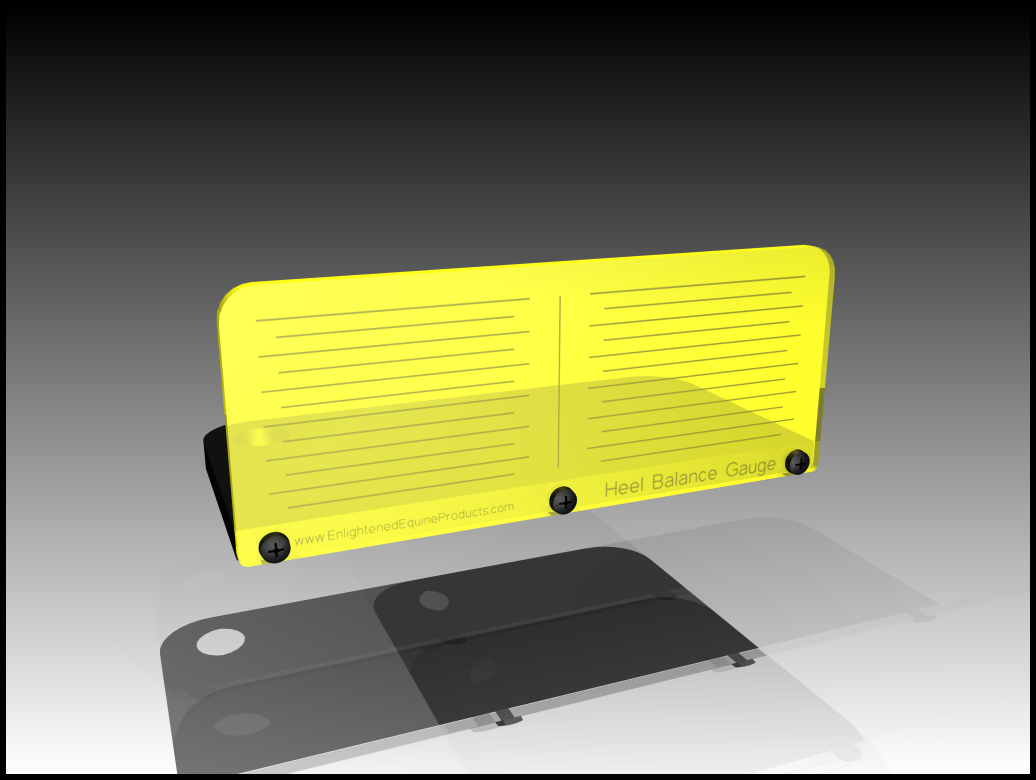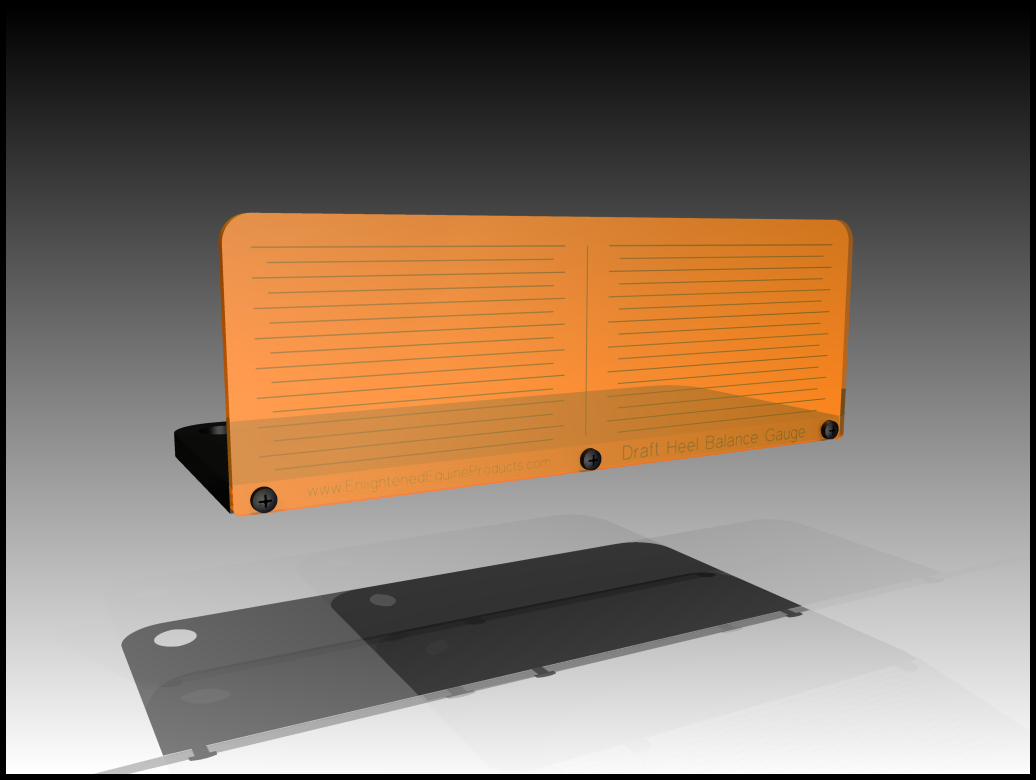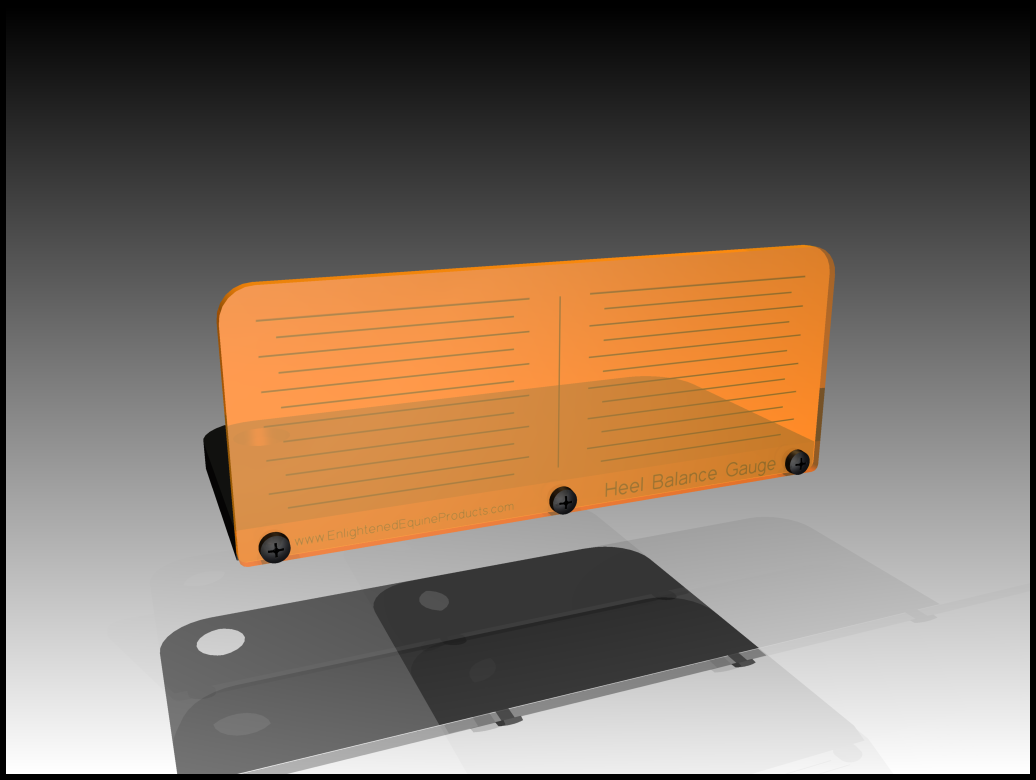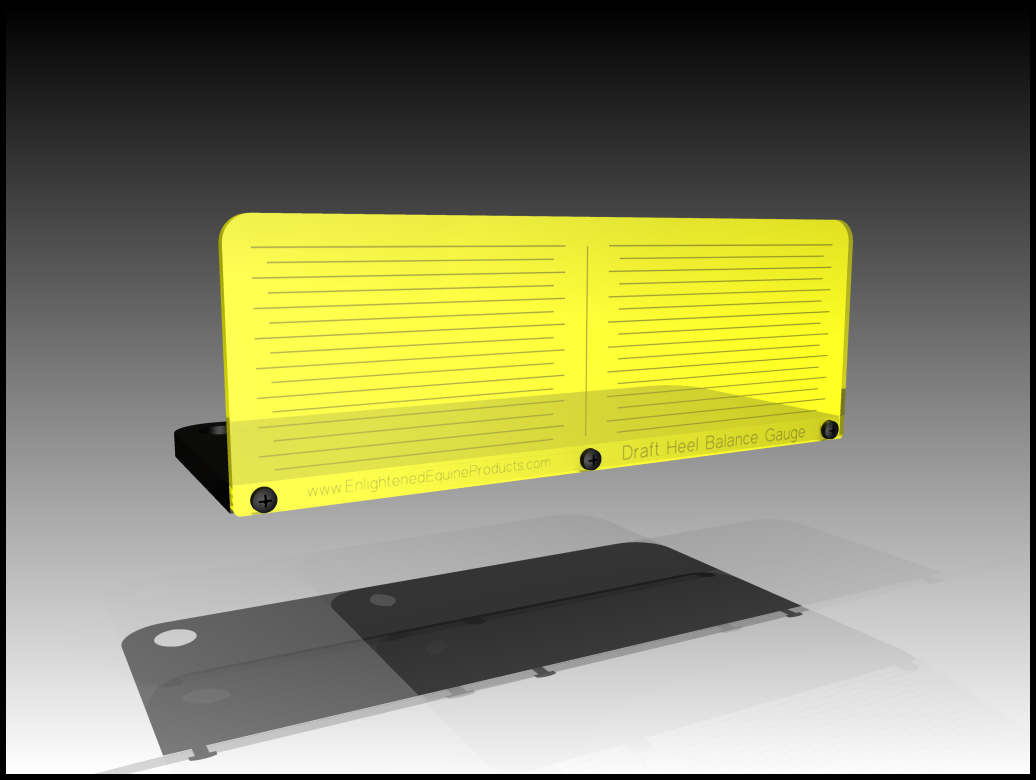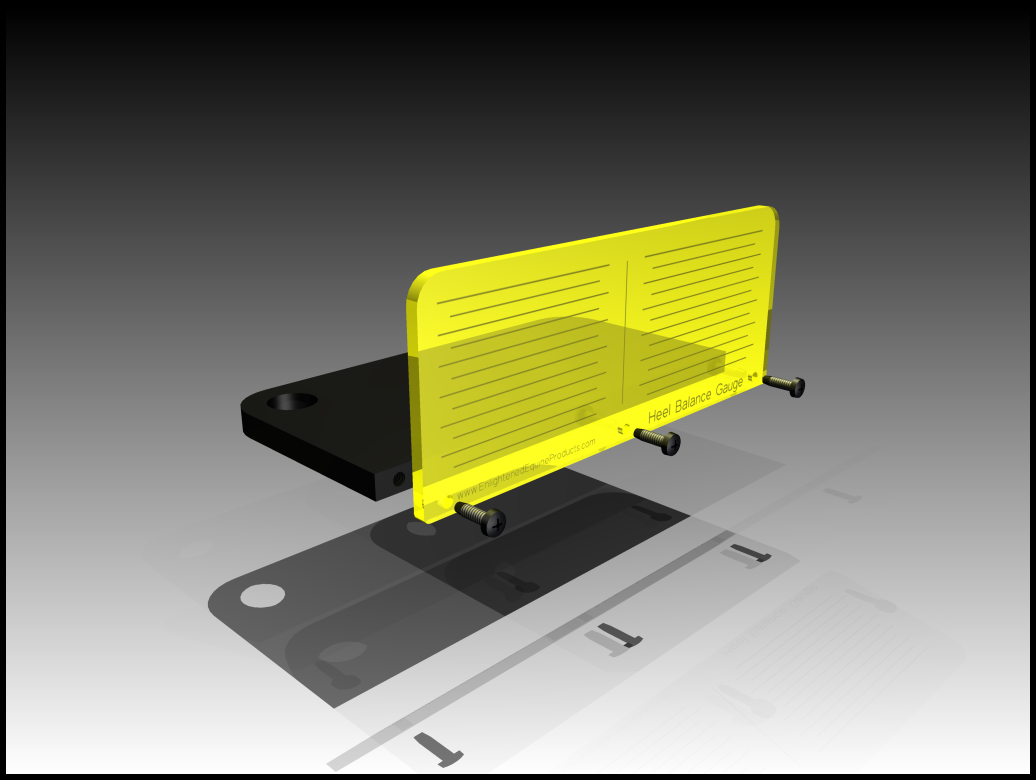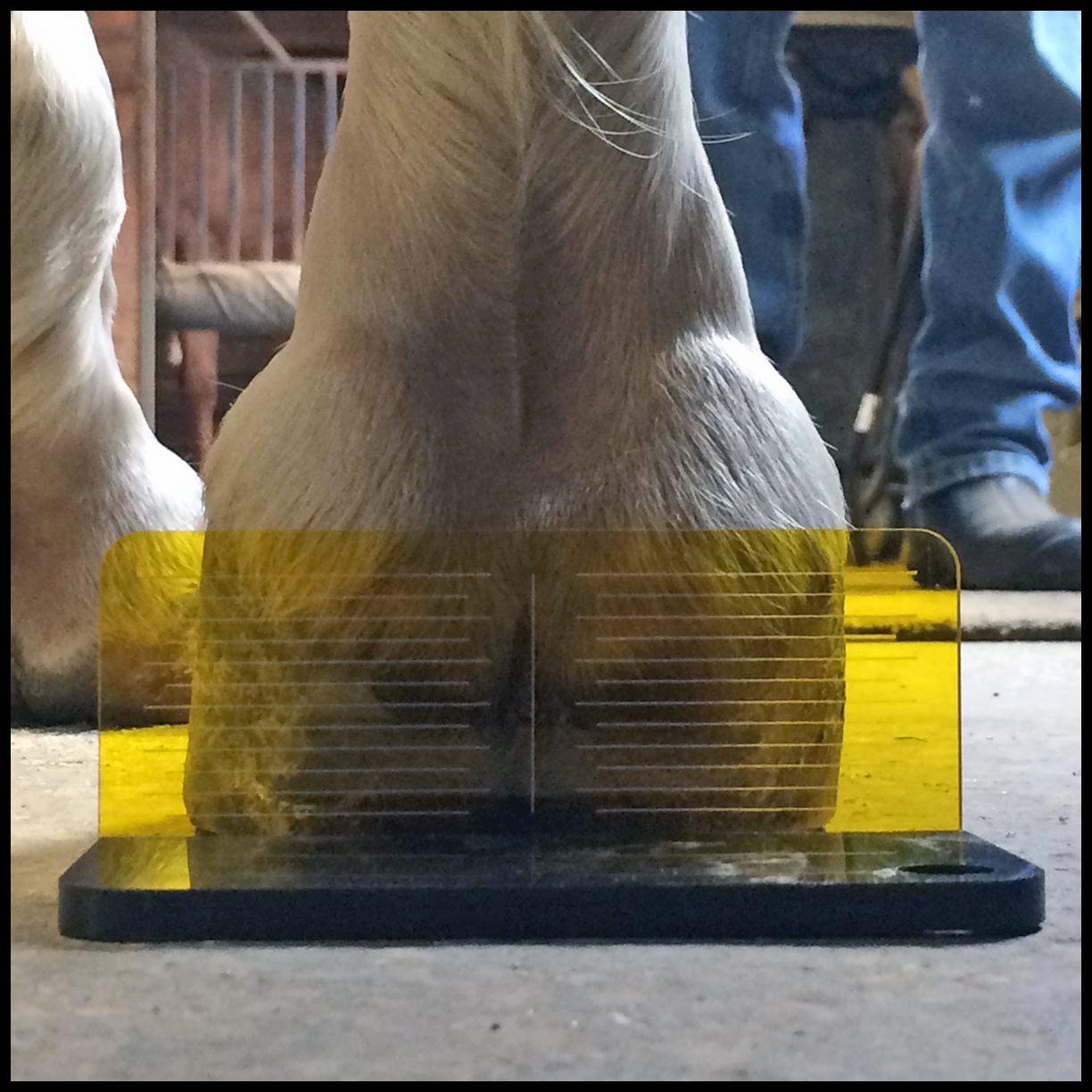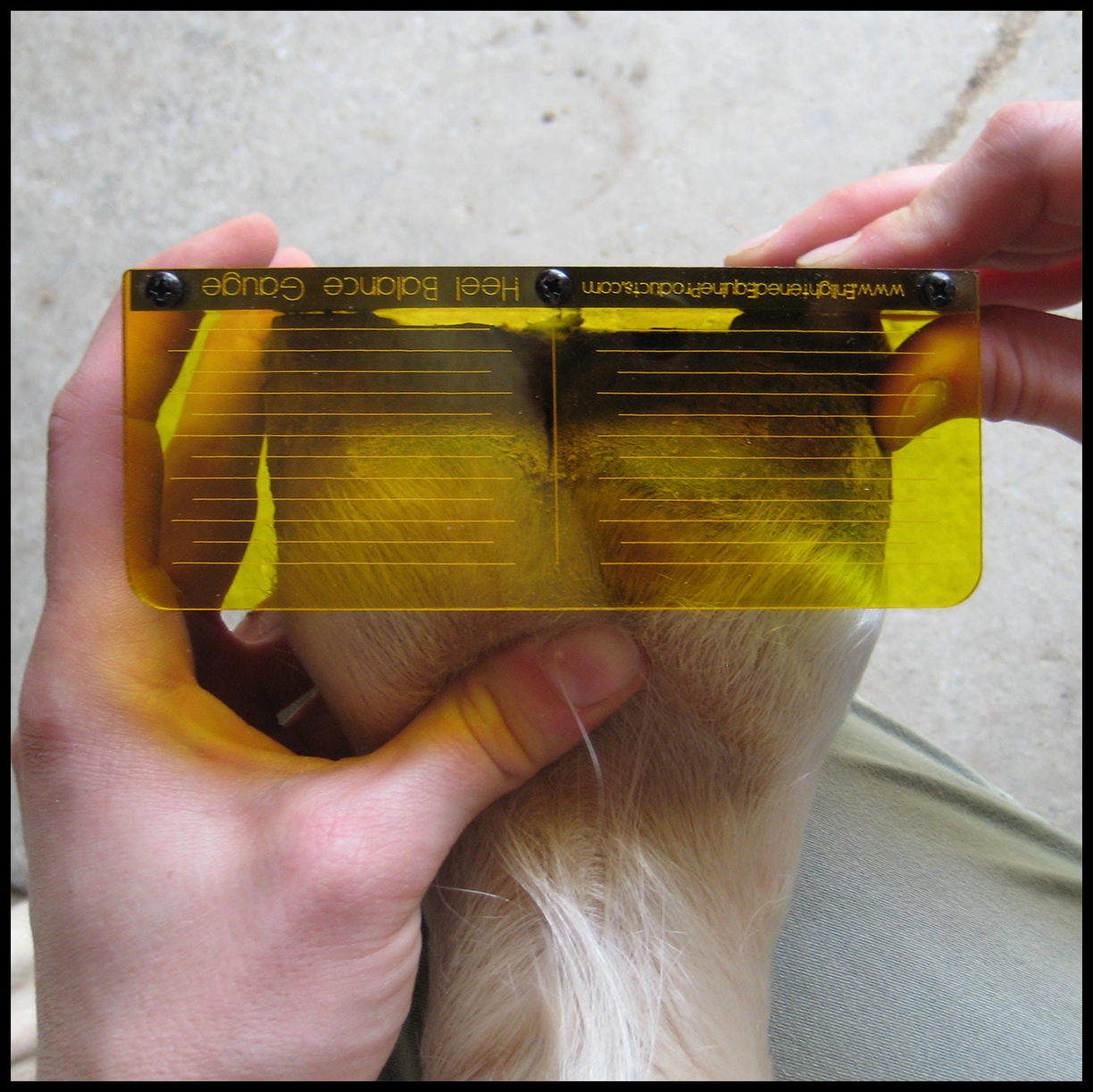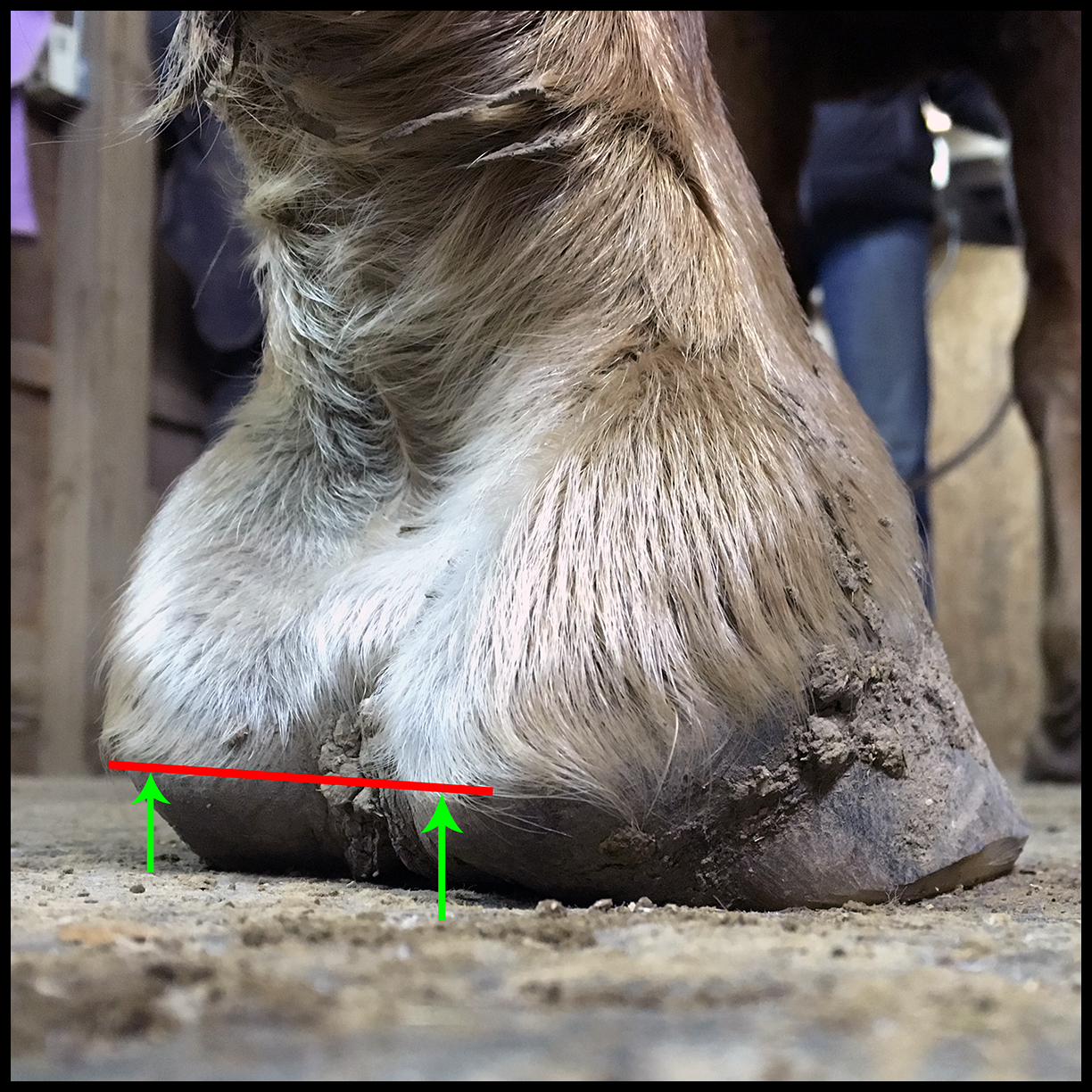Need a simple, reliable way to tell if your horse’s feet are in medial-lateral (M-L, or side-to-side) balance? Then our low-cost Heel Balance Gauge is for you! Designed with both horse owners and hoof care professionals in mind, this easy-to-use tool will aid in determining proper M-L balance even on badly-distorted feet.
Each gauge’s parts are precision machined from high-density polyethylene and acrylic on a computer numerical control (CNC) router, with the scale engraved by CNC laser for accuracy and durability. The gauge is available in two different sizes and scale colors to accommodate nearly every size horse foot in all types of lighting conditions.
Sizes
Horse Heel Balance Gauge Scale – 5″ long x 2″ high (127mm x 51mm)
Draft Heel Balance Gauge Scale – 7″ long x 2.5″ high (178mm x 64mm)
The Heel Balance Gauge is shipped flat, and requires minor assembly
Order Here
We’ve created a new order page here.
Assembling the Heel Balance Gauge
The Heel Balance Gauge is easy to assemble using only a #1 Phillips screwdriver. To assemble:
- Place the black base plate on a flat surface, with the three (3) screw holes facing you, and the large hole in the plate to the back left.
- Place the transparent colored scale plate vertically in front of the black base plate, with the engraved side away from you, and the text reading properly.
- While keeping the left, right, and bottom edges of the base plate and scale plate aligned, insert one of the four (4) included screws through each hole in the scale plate and into the hole in the base plate, and tighten snugly using a #1 Phillips screwdriver. Do not over-tighten! An extra screw is included.
Using the Heel Balance Gauge
The Heel Balance Gauge can be used in two different ways, as shown below. Although the horse in the following photos is unshod, the gauge is used in exactly the same manner on a shod hoof.
Method #1 – Foot on a flat surface (probably easiest for horse owners)
- Place the gauge on the same surface as the hoof bottom, with the transparent colored scale plate against the back of the foot and the black base plate towards the rear of the horse.
- Line up the vertical line in the center of the scale plate with the cleft between the heel bulbs.
- Compare the hairline at the coronary band; a hoof in proper M-L balance should have equal-height hairlines at the heel bulbs, with no obvious “tilt” to the hairline.
Method #2 – Foot off the ground with the sole in a roughly vertical position (probably most useful for hoof care professionals)
- Hold the black base plate of the gauge firmly against the heel buttresses on the bottom of the back of the foot, with the transparent colored scale plate against the heel bulbs and the vertical line in the center of the scale plate aligned with the cleft between the heel bulbs.
- Compare the hairline at the coronary band; a hoof in proper M-L balance should have equal-height hairlines at the heel bulbs, with no obvious “tilt” to the hairline.
Additional Medial-Lateral Balance Information
Note: This is not intended to be a complete dissertation on identifying proper M-L balance! If you suspect your horse is not in medial-lateral balance, or if your horse is, indeed, out of medial-lateral balance, it is important that you address the situation with a properly-trained hoof care professional as soon as possible.
The overwhelming majority of horses that are in proper M-L balance will share three (3) characteristics:
- The horse will land flat at the walk on a level, unyielding surface
- The tubules of the hoof capsule at the toe will be perpendicular to the ground when viewed from the front
- The vertical height of the heel bulbs will be equal, although the heel length (measured from the hairline to the heel buttress) may not be
The Heel Balance Gauge is intended to aid in determining the last of these three. It can be used to directly measure the heel height as shown in the following photograph –
This distance can be difficult to visualize without assistance, particularly on horses with less-than-ideal hoof form. It’s important to understand that the gauge is useful only at the rearmost part of the hoof i.e. that part of the hoof that touches the gauge. It cannot be used to directly assess any points on the hoof ahead of that; in other words, distortions in the hairline caused by “shoved up” areas on the hoof wall cannot be quantified with this gauge.
Also, some hoof care providers instead use heel length, which is the distance from the hairline down the hoof wall to the heel buttress, to help determine if the foot is properly balanced. Heel length cannot be reliably used to determine if a hoof is in medial-lateral balance, as this distance relies on a perfectly symmetrical hoof form to be an accurate representation of the actual height of the heels. The Heel Balance Gauge circumvents this dependence by providing a direct measurement of the vertical heel height.
